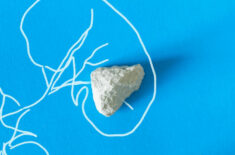Overview
Fungal infections occur when there is an overpopulation of fungi in the body.
Fungi are a normal part of the body’s microbiome, and they’re usually harmless unless an overgrowth occurs.
Candida albicans is a yeast (a type of fungus) that can quickly multiply and may cause harmful health effects like weakened immunity.
Candida symptoms include digestive issues, chronic fatigue, mood imbalances, nausea, headaches, trouble focusing, low libido, sinus infections, and joint pain.
Candida overgrowth (aka Candidiasis) often occurs in dark, moist places of the body like the mouth (oral thrush), the intestines, and the vagina. It can also sometimes appear on the skin.
Vaginal infections are a common women’s health problem that often leads to vaginitis – inflammation of the vagina often accompanied by itching and discharge.
Vaginal yeast infections symptoms are often confused with bacterial vaginosis symptoms because they both involve inflammation, itching, and discharge.
The main difference between these two conditions is that the yeast infection vaginal discharge is thick and white like cottage cheese and typically odorless, while bacterial infection discharge is thin, green, gray, or yellow with a “fishy” smell.
Causes of Vaginal Yeast Infections
- Antibiotic use
- Pregnancy
- Hormone changes (especially increases in estrogen)
- Compromised immunity
- Major blood sugar issues
Yeast Infection Treatment Options
Treatment options will depend on the type and severity of your yeast infection.
OTC (over-the-counter) drugstore options include fungicidal medications in the form of lotions, ointments, oral tablets, and suppositories like Monistat (miconazole), Canesten (clotrimazole), and Diflucan (fluconazole).
Other natural options include:
- Antifungal essential oils like tea tree and oregano
- Probiotics like lactobacillus can help balance a fungal overgrowth
- Eating yogurt (unsweetened) can help with oral thrush
- Vitamins C and D3 can help boost immunity so your body fights fungal infections better.
- Topical boric acid (Not to be used if you’re pregnant)
- Apple cider vinegar (ACV) helps neutralize the environment yeast grows in. Try adding 1 cup of ACV to your bathwater. (Don’t use it as a douche as this can wipe out good microbes as well as harmful ones.)
- Because candida thrives on sugar and carbohydrates it’s also important to cut out all sugar, refined carbohydrates, alcohol, and high carb vegetables and fruits. (Here’s how to eat like a yogi for less yeast and more energy.)
Always consult with your doctor if you suspect you have a yeast infection.
Recurring yeast infections may be a sign of a greater underlying health problem.
Essential Oils As Home Remedies For Yeast & Other Infections
Essential oils (EOs) are highly concentrated plant extracts containing active chemicals that offer many health benefits.
Aromatherapy is an alternative medicine and holistic healing treatment that uses essential oils for therapeutic purposes.
Research shows that certain essential oils can help boost the immune system and offer antifungal, antibacterial, antiviral, and antiseptic properties making them effective natural options for treating and preventing infections.
The Most Antifungal Essential Oils
Tea tree oil (Melaleuca alternifolia)
Tea tree essential oil is a powerful antifungal and antimicrobial agent that can heal and guard against many different infections, including yeast infections like Candida Albicans.
- A 2003 study published in the Journal of Antimicrobial Chemotherapy found tea tree oil to be effective against 14 different drug-resistant strains of Candida. (1)
- A 2016 study published in the Journal of Applied Microbiology found that tea tree oil, oregano oil, lavender, and basil oil all inhibited the growth and the activity of Candida Albicans more effectively than the antifungal drug Clotrimazole. (2)
Safety & Caution:
- Not safe for babies under 6 months old
- Toxic if ingested (topical use only)
- May cause skin irritation (perform a patch test)
- Avoid contact with eyes and mucus membranes
Oregano oil (Origanum vulgare)
Wild oregano essential oil is rich in thymol and carvacrol, chemicals that contain potent antifungal properties.
Oregano is also a powerful antibacterial, antiviral, antiseptic, and anti-inflammatory agent.
A 2017 study published in the Journal of Applied Microbiology found oregano oil to be effective at protecting against bacteria like E. Coli and fungi like Candida Albicans. (3)
Oregano oil isn’t safe for pregnant women, babies, and small children.
Safety & Caution:
- Not safe for babies and children under 2 years old
- Not safe for pregnant and breastfeeding mamas
- Avoid if you are taking multiple medications
- May cause skin irritation; perform a patch test.
Lavender oil (Lavandula angustifolia)
Lavender oil is rich in linalool and linalyl acetate, which has been shown to kill or inhibit the growth of yeast and fungi. (4)
A 2005 study published in Medical Mycology found that lavender oil at 2% concentration could kill 100% of Candida Albicans cells within 15 minutes. Researchers found the oil inhibited the spread of Candida and kept it from infecting other tissues. (5)
Safety & Caution:
- No contraindications are known.
- Don’t use in the first trimester of pregnancy.
- Don’t use it on infants under three months of age.
- Discontinue use if you experience an allergic reaction.
Other essential oils that may be beneficial for thrush/yeast infections are:
- Basil oil
- Lemongrass oil
- Thyme oil
- Lemon oil
- Geranium oil
- Chamomile oil
Safety Concerns
When used safely and mindfully, EOs typically offer little to no side effects though they sometimes happen.
Common side effects are skin irritation, allergic reactions, breathing trouble, and increased sensitivity to sunlight after topical exposure.
Many EOs aren’t safe for pregnant women and breastfeeding mamas or for babies and young children, or people with underlying conditions like high blood pressure or epilepsy.
Research the contraindications of each essential oil you’re going to use on yourself and your kiddos before applying.
Essential oils are not regulated by the FDA (Food and Drug Administration), so there is no real quality control system.
Many of the products on the market are either diluted or contaminated with solvents and other chemicals.
Always choose high-quality, certified organic, therapeutic grade EOs to ensure maximum medicinal benefits.
Consult with your healthcare provider before using EOs for yeast infections, especially if they’re recurring.
Perform a patch test before using oils topically and wait 24-48 hours in case of a reaction.
If you experience any discomfort or adverse effects, stop using the oil immediately.
Essential Oils For Yeast Infections: 2 DIY Recipes
It’s important to always dilute your essential oils with a carrier oil like coconut oil when applying them topically.
An added bonus of coconut oil is that it’s antifungal and antimicrobial which will enhance the efficacy of the oils.
Here are two DIY recipes for vaginal yeast infections:
Honey, Lavender, & Yogurt Tampon
A 2015 study published in the Global Journal of Health Science found that using a mixture of honey and yogurt proved to be more effective than the antifungal medication Clotrimazole at relieving vaginal candidiasis symptoms. The treatment was applied daily for seven consecutive days. (6)
This recipe is based on this research.
Raw manuka honey has antifungal and antimicrobial properties, and unsweetened raw yogurt made with live cultures is rich in good bacteria that can help restore balance to the vaginal microbiome.
*Note: Do NOT use if you’re pregnant, trying to get pregnant, or postpartum.
Mixture:
- 2 drops lavender oil
- 2 drops tea tree oil
- 2 drops basil oil
- 1 teaspoon raw Manuka honey
- 2 tablespoons of raw, organic, unsweetened yogurt *
- 1 organic cotton tampon
Thoroughly mix the essential oils with the yogurt and honey in a clean, sterilized glass bowl.
Completely cover the tampon with the mixture and insert it into the vagina.
Leave it in for no more than 6-8 hours.
An optimal time to apply this is right before bed.
Remove the tampon in the morning.
Apply this mixture daily for seven days for best results.
*Make sure the yogurt is made with live cultures and contains no preservatives or additives. This is very important.
Lavender, Tea Tree, & Coconut Oil Suppositories
These suppositories are easy and quick to make.
Make this batch once and keep it in the freezer for up to two weeks for repeat applications.
Mixture:
- 7 drops lavender oil
- 7 drops geranium oil
- 7 drops tea tree oil
- ½ cup of coconut oil
Slightly melt the coconut oil but do not overheat it.
Using a clean, sterile glass bowl, add the essential oils to the slightly warm coconut oil and mix thoroughly.
You can either put the bowl in the fridge and scoop out the hardened mixture with a tablespoon, make a suppository shape with your hand and insert it into the vagina.
Or you can use a silicon roll mold to make individual suppositories to keep in the freezer and grab them when you need them.
Insert 1 suppository daily for seven days for best results.
If you experience an adverse effect or discomfort discontinue use immediately.
*Note: Please check with your midwife or healthcare provider before using these if you’re pregnant.
REFERENCES
:
(1) https://academic.oup.com/jac/article/51/5/1223/784261
(2) https://pubmed.ncbi.nlm.nih.gov/27568869/
(3) https://sfamjournals.onlinelibrary.wiley.com/doi/full/10.1111/jam.13413
(4) https://pubs.acs.org/doi/10.1021/jf9708296
(5) https://academic.oup.com/mmy/article/43/5/391/1271214
(6) https://www.ncbi.nlm.nih.gov/pmc/articles/PMC4803919/
















